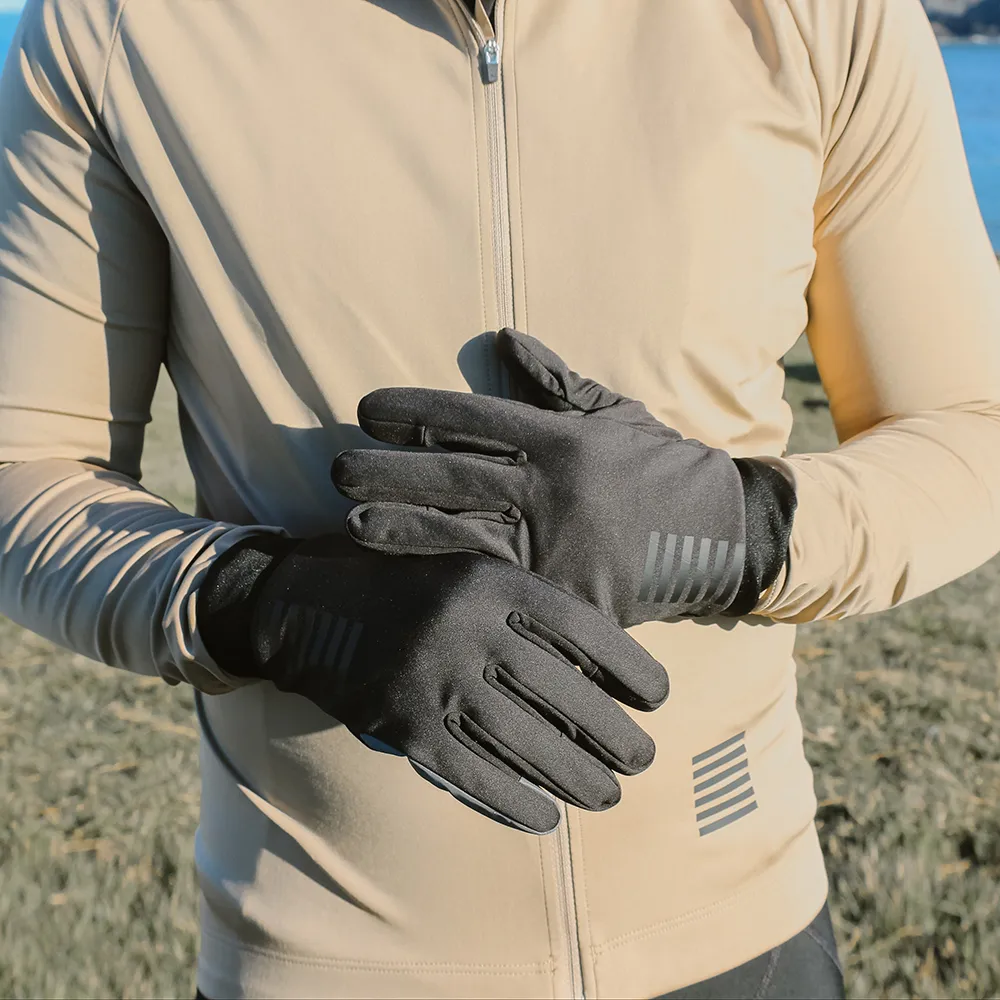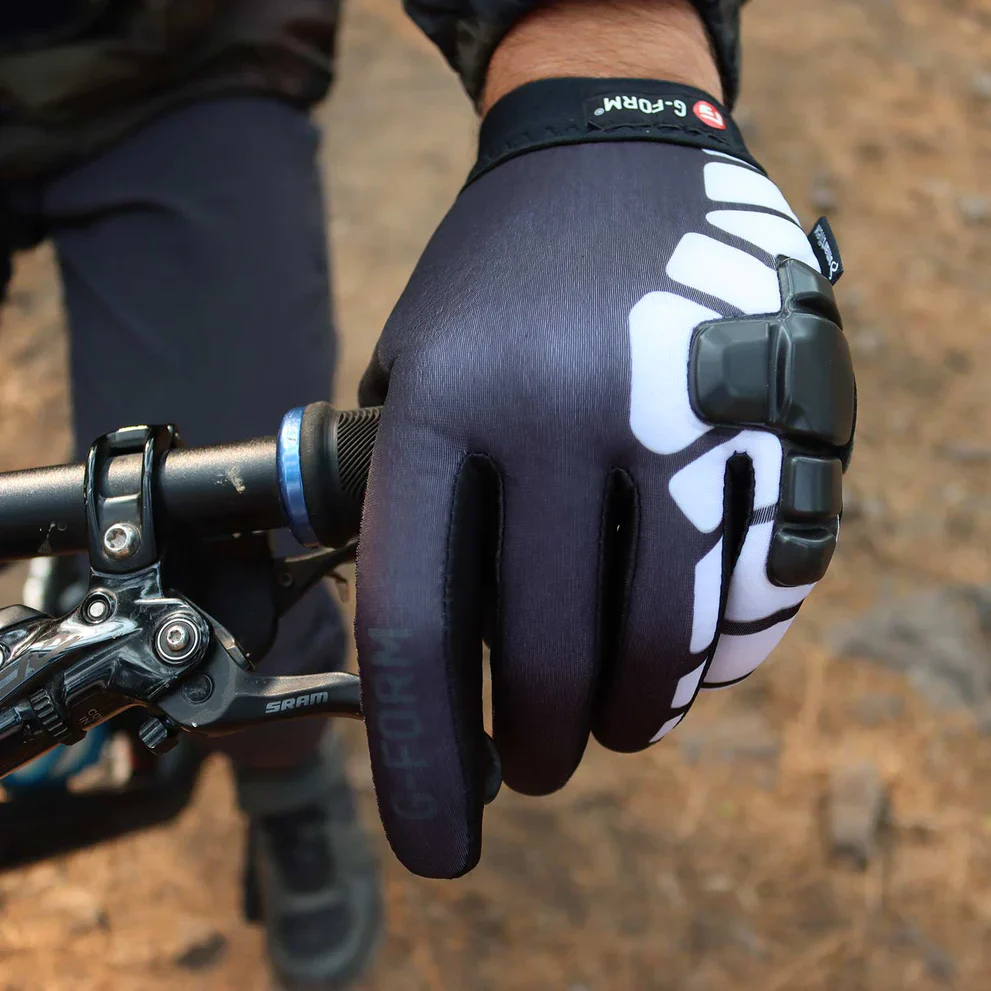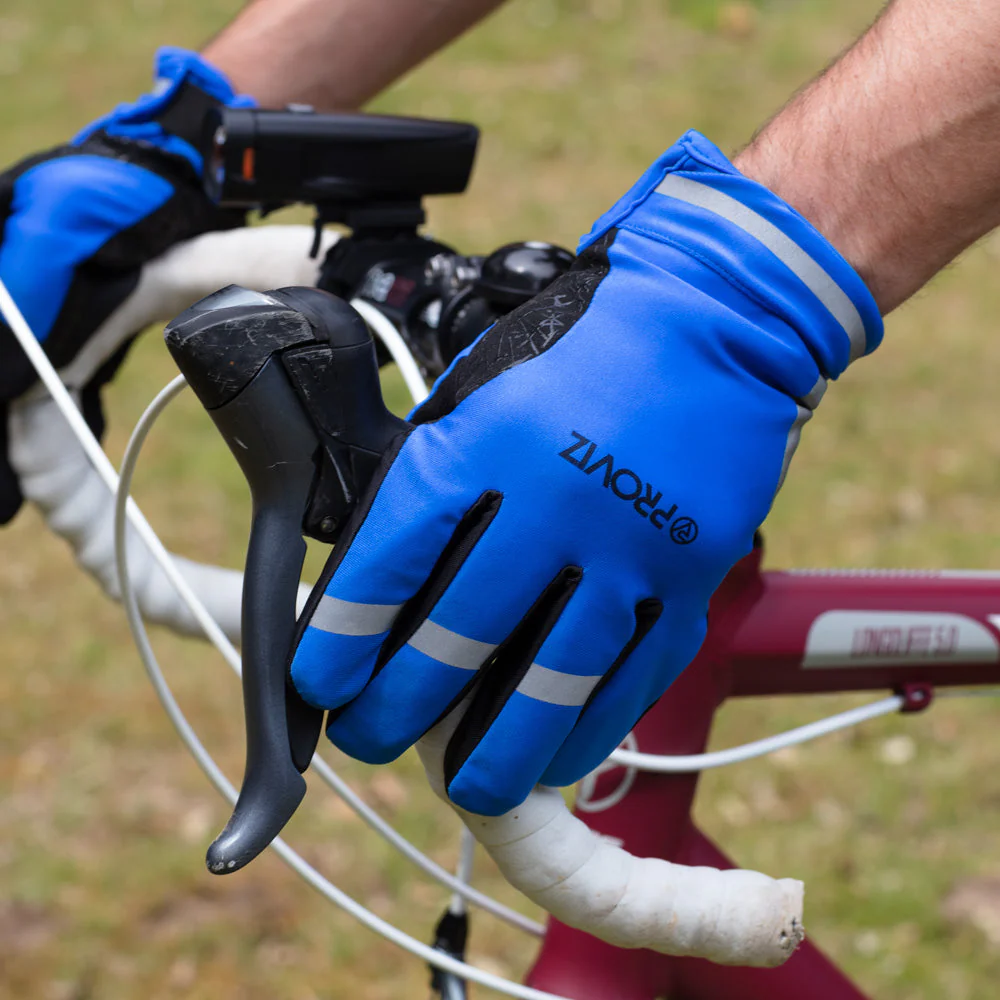Importance of Gloves for Winter Cycling
Cycling gloves for cold weather! Cycling in cold weather can be exhilarating, but without proper protection, your hands can suffer. Your hands are vital for steering, braking, and signaling. When temperatures drop, blood flow to your extremities decreases. This can lead to numbness and reduced dexterity. That’s where cycling gloves for cold weather step in. They provide the necessary insulation to keep your hands warm and responsive.

Proper gloves also protect against windchill, which can penetrate through regular gloves not meant for cycling. They fend off the cold air that rushes past as you cycle, maintaining your hands’ natural warmth. Additionally, they guard against moisture – be it from rain, snow, or your own perspiration. Wet hands are cold hands, so a waterproof or water-resistant layer is crucial.
Wearing cycling gloves for cold weather isn’t just about comfort; it’s about safety too. With full control over your bike, your safe handling improves. Moreover, gloves cushion your hands against vibrations from the bike handle, decreasing the risk of fatigue on long rides.
In summary, winter cycling gloves are key for warmth, dexterity, and protection. With them, you can enjoy your ride, no matter the cold.

Types of Cycling Gloves for Cold Weather
When choosing cycling gloves for cold weather, consider the different types available. Here are the main categories:
- Lobster Gloves: These offer a compromise between mittens and full-finger gloves. Lobster gloves group your fingers together to retain more heat while still providing some dexterity for braking and shifting.
- Full-Finger Gloves: These gloves cover each finger individually. They are best for milder winter conditions where full dexterity is necessary.
- Mittens: Mittens are the warmest option, grouping all the fingers together. They are the best choice for the coldest days but offer the least control.
- Convertible Gloves: Providing flexibility, these gloves can transform from mittens to full-finger gloves. Convertible gloves allow for better temperature control and dexterity when needed.
- Heated Gloves: These come with built-in heating elements powered by batteries. Heated gloves are great for extreme cold but are usually more expensive.
- Neoprene Gloves: Made from a material similar to that used in wetsuits, neoprene gloves are waterproof and wind-resistant, providing warmth in wet conditions.
Each glove type has its own advantages. Make your choice based on the balance you wish to achieve between warmth and dexterity, the specific weather conditions you expect to face, and your personal preference for comfort and control.
Features to Look for in Cold-Weather Cycling Gloves
When hunting for the perfect cycling gloves for cold weather, don’t just grab any pair. Check these must-have features:
- Insulation: Look for gloves with good insulation, crucial for warmth. Thinsulate or fleece linings often do the job.
- Water-Resistance: Your gloves must fend off moisture. Go for materials that offer waterproof or water-resistant protection.
- Wind Protection: Gloves should shield your hands from biting winds. Look for windproof options to keep the chill out.
- Breathability: Avoid sweaty hands with breathable fabrics. These allow moisture to escape, keeping your hands dry.
- Grip: Good gloves have textured palms or silicone grips. These ensure your hands don’t slip from the handlebars.
- Touchscreen Compatibility: For riders using phones or GPS devices, this is handy. Choose gloves that don’t need removal for screen use.
- Ease of Movement: Make sure you can still flex your fingers. Check that the gloves do not restrict hand movement.
- Adjustable Closure: Wrist closures help keep the cold out. Look for Velcro straps or elastic bands for a snug fit.
- Reflective Elements: For low light conditions, reflective parts improve visibility. It’s a safety plus.
Incorporate these features into your buying decision. They keep you warm, dry, and in control through your winter rides.
Fit and Comfort: Finding the Right Size
Finding the right size in cycling gloves for cold weather is crucial. Ill-fitting gloves can impair your ability to control your bike and lead to discomfort. Here is a guide to ensure you get gloves that fit well and provide comfort:
- Measure Your Hand: Start by measuring the circumference of your hand around the widest part, usually just below the knuckles, excluding the thumb. Use this measurement against the manufacturer’s sizing chart.
- Check the Length: Make sure the fingers of the gloves aren’t too long or short. Your fingertips should not press hard against the glove’s ends.
- Flex and Make a Fist: With the gloves on, try making a fist and stretching your fingers. This ensures the gloves have enough flexibility and don’t restrict movement.
- Wrist Coverage: The gloves should extend over the wrist. This prevents cold air from sneaking in between the glove and your sleeve.
- Snug but Not Tight: Gloves should be snug to keep warmth in and cold out. However, they shouldn’t be so tight that they cut off circulation.
- Try Different Brands: Sizes can vary between brands. Try on a few to find the best fit. Some brands might cater better to wide or narrow hands.
- Consider Glove Liners: For extra warmth, you might add liners. Ensure the gloves can accommodate them without being too tight.
Good fit and comfort go a long way in maintaining your hand health and control over your bike during cold weather cycling. Take your time in choosing the right pair, and you’ll have a more enjoyable ride.
Materials and Insulation Options
Choosing the right materials and insulation is key when selecting cycling gloves for cold weather. Here are some tips:
- Synthetic Fibers: Look for gloves made from synthetic fabrics. These fibers dry quickly and provide excellent insulation.
- Natural Materials: Wool and leather offer natural warmth. They might not be as waterproof but can be very comfortable.
- Thinsulate Material: A popular insulation option, Thinsulate traps and holds body heat while allowing moisture to escape.
- Fleece Lining: Fleece provides good insulation and is soft against the skin. It keeps hands warm on chilly rides.
- Windstopper Membrane: Some gloves feature a Windstopper membrane. This barrier is windproof yet breathes well for temperature regulation.
Remember, the thicker the insulation, the warmer the gloves, but this can reduce dexterity. Strike a balance that keeps your hands warm without sacrificing control.
Maintaining Dexterity and Grip Control
While warmth is key, don’t overlook dexterity and grip control in cycling gloves for cold weather. Proper grip control ensures safe bike handling, especially when making quick maneuvers or braking. Here’s how to maintain these crucial elements:
- Pre-curved Fingers: Gloves designed with a natural curve reduce hand fatigue. They mimic the hand’s resting position, providing comfort and dexterity.
- Flexible Materials: Select gloves with stretchy, flexible fabrics at the joints. This supports movement and grip without resistance.
- Silicone Grippers: Look for palms or fingers with silicone patterns. These enhance your grip on the handlebars even in wet conditions.
- Light Padding: Too much padding can hamper your feel for the bike. Choose light padding to maintain sensitivity while still cushioning against vibration.
- Fit: A snug fit improves control and keeps the gloves from shifting. Gloves that are too loose can reduce your ability to grip securely.
By focusing on these features, you ensure that your cycling gloves for cold weather don’t compromise your performance. You’ll retain the ability to feel and control your bike, despite the chill.
Best Practices for Caring for Your Winter Cycling Gloves
To ensure your cycling gloves for cold weather stay in top condition, follow these best practices:
- Clean Regularly: Dirt and sweat can ruin the material. Wash them following the manufacturer’s instructions.
- Avoid Heat: Don’t put gloves near heaters or in a dryer. Let them air dry to prevent damage.
- Store Properly: Keep gloves flat or on a hook, away from direct sunlight, which can degrade the fabric.
- Inspect for Wear: Check for holes, tears, and worn areas. Fix them early to extend the gloves’ life.
- Use Mild Detergent: Harsh chemicals can affect insulation and waterproofing. Opt for a gentle soap.
- Dry Thoroughly: Before storing, ensure your gloves are completely dry. This prevents mildew and odor.
- Follow Leather Care: If they’re leather, use conditioner to keep the material supple and prevent cracking.
By taking good care of your gloves, you maintain their warmth, dexterity, and longevity. Keep them clean, dry, and in good repair for reliable performance all winter long.
Top Picks for Cold-Weather Cycling Gloves
Selecting the right cycling gloves for cold weather is essential for a comfortable ride. When the temperature drops, your choice in gloves can make a huge difference in your cycling experience. Here are top picks that deliver warmth, dexterity, and durability, ensuring you stay focused on the ride ahead.
- Pearl Izumi Lobster Gloves: Ideal for freezing conditions, these lobster gloves balance warmth and control.
- Giro DND Full-Finger Gloves: Perfect for milder winters, these gloves offer full dexterity and a snug fit.
- REI Co-op Mittens: When it gets extremely cold, these mittens deliver unmatched warmth.
- Castelli Convertible Gloves: With their versatile design, switch between full-finger and mitten modes easily.
- Volt Heated Gloves: For brutal cold, the built-in heating elements in these gloves provide consistent warmth.
- O’Neal Neoprene Gloves: These wind-resistant and waterproof gloves are ideal for wet and windy rides.
Each pair on this list has been chosen with critical features in mind. Remember to consider the type of ride, conditions, and your comfort preferences when choosing. With the right pair of cycling gloves for cold weather, your hands will remain well-protected throughout your winter cycling adventures.




